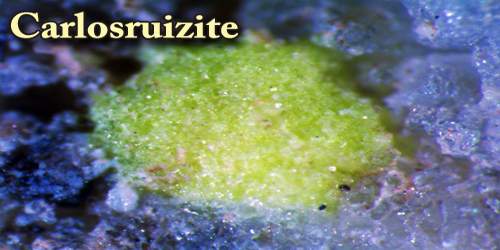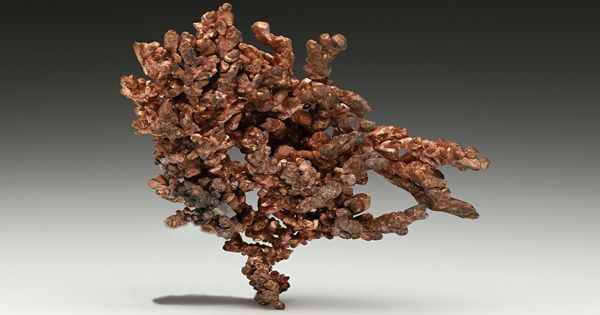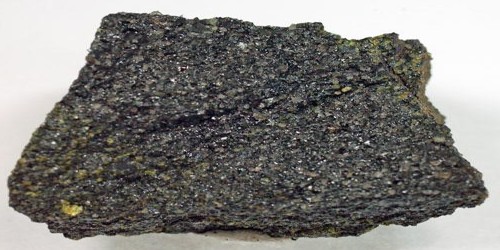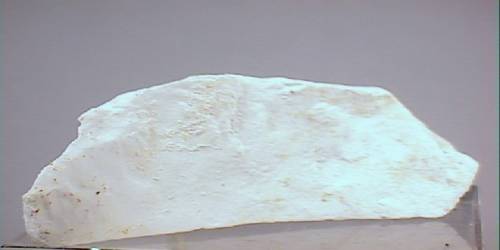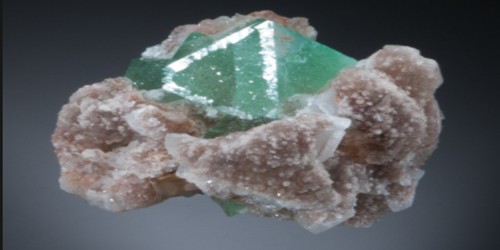About K2 Granite–
“K2 Granite,” also known as “K2 Jasper” and “raindrop azurite,” is the foundation of the earth, but at the same time, it goes through changes, breaking down into clay and sand and over years transforming back into a granite formation. It is an extremely interesting rock and lapidary material from the Skardu area of northern Pakistan. It is like an eye magnet for anyone who sees it for the first time.
It is a bright white granite that contains sharply contrasting orbs of bright blue azurite. The azurite orbs range from a few millimeters up to about two centimeters in diameter. On a broken surface or on the surface of a slab, the blue orbs look like drops of bright blue ink that splashed onto the rock. Upon closer examination, however, you will see that they are actually spherical in shape.
Its life cycle is a true testament to the beauty and power of Mother Nature. The grounding and transformational elements of granite blend well with the qualities of Azurite. The combination allows us to look back to our earliest ancestral lineage memories, while at the same time sending us forward to unveiling our own enlightenment and universal truths. The healers in ancient civilizations in Atlantis, Greece, Egypt, Mayans, and Native Americans used Azurite to communicate with spirit guides and gain wisdom about the meaning and purpose of life on earth.
Although K2 Jasper is the most commonly used name for marketing this material, it is definitely not jasper. The white granite is very fine-grained and composed of quartz, sodium plagioclase, muscovite, and biotite. Some specimens show the strong alignment of the biotite grains and could be called “granite gneiss.”
Examination of the azurite spheres with a good hand lens or microscope reveals that the azurite is present along mineral grain boundaries, within tiny fractures, and as a “dye” penetrating the feldspar grains. The azurite is a secondary material that clearly formed after all of the other minerals in the granite had solidified from the parent melt.
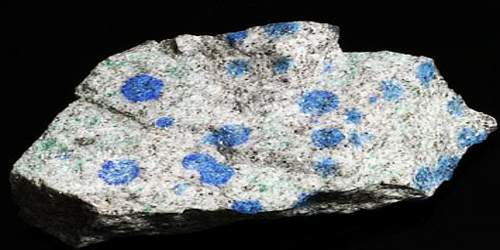
Sources and Properties of K2 Granite –
K2 Granite is named after a mountain in the Karakoram Range near the border between Pakistan and China. K2, also known as “Mount Godwin Austen,” is the second-highest mountain in the world. The azurite granite is found in colluvium near the base of the mountain. It is in a very remote area visited by very few people.
The mineral content of granite consists of the quartz, mica, and feldspar, and sometimes other minerals. Those minerals give granite a light cream, white or pink color, and are complemented by the inclusion of other minerals like Biotite and Black Amphibolehornblende which gives the granite a salt-and-pepper appearance.
K2 Granite cuts tumbles and polishes beautifully. Due to its high feldspar content, it can be easily cut with a lapidary saw and shapes quickly on a diamond wheel. Although azurite has a Mohs hardness of 3.5 to 4, the blue dots have the same cutting and polishing properties as the surrounding white granite. This is because the azurite exists as a stain rather than as discrete mineral grains.
The K2 crystal is a combination stone with an impressive ancestral pedigree that can be traced back to the ancient Greeks and Native American healers who used Azurite in their healing rituals. Occasionally marked with Green Malachite inclusions, its perfect blue orbs look like dye but to everyone’s surprise, these unique characteristics are actually a natural formation, adding to its ethereal and otherworldly aesthetic.
K2 shapes and polishes well in a rock tumbler to produce tumbled stones. It also cuts attractive spheres. Cut beads are not seen in the marketplace. This is likely because if you cut ten pounds of K2 into 1-centimeter beads, very few of them will display the blue azurite color.
Uses and Benefits of K2 Granite –
With its silvery-gray color marked with perfectly circular blue orbs, the K2 crystal has an almost otherworldly appearance. Like a magical Faberge egg gifted from Mother Nature, this relatively new stone has been creating a buzz at gemstone shows across the country.
K2 is relatively durable in jewelry. The feldspar minerals in K2 have a hardness of about 6 on the Mohs scale and will be scratched or show signs of wear over time if subjected to abrasion or impact. K2 is therefore not a good stone for mounting in a ring or bracelet. Precious and Semi-precious gemstones have been used since recorded history and probably before, for spiritual, emotional, and physical healing.
Besides its extremely rare and distinctive aesthetic, the K2 crystal stone vibrates with powerful energy, which makes it an excellent stone for healing. This combination crystal gets its celestial quality from Azurite and its grounding and stabilizing properties from Granite, giving us the benefits of a peaceful mind, the stepping-stone to spiritual enlightenment. If people seek universal truths, meditate with the K2 crystal and go deep. And by deep we mean as far back as past lives and ancestral lineage. Because it’s when the past and present merge that we begin to see the divine truth of the universe unfolding before our eyes.
K2 attracts a lot of attention at gem and mineral shows. The rare combination of azurite in granite starts a lot of discussions, and even the occasional argument. Thus far, K2 is not extremely expensive. Great material can be purchased for about $30 to $40 per pound. This price is similar to what is paid for nice specimens of many popular agates and jaspers. The best material has numerous, randomly spaced azurite stains on a bright white granite background.
Information Sources:

